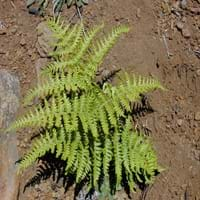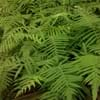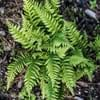Life Span
Perennial
Perennial
Origin
United States, Southeastern United States
World, Pandemic
Types
Bigleaf hydrangea, Hortensia, Smooth hydrangea, Oakleaf hydrangea, Annabelle
Pteridium arachnoideum, Pteridium caudatum, Pteridium centrali-africanum
Number of Varieties
Not Available
Habitat
Forest edges, Hillside, Woods
meadows, Shady Edge, Woodland Garden Dappled Shade
USDA Hardiness Zone
5-9
3-12
Sunset Zone
Not Available
1a, 1b, 2a, 2b, 3a, 3b, 4, 5, 6, 7, 8, 9, 10, 14, 15, 16, 17, 18, 19, 20, 21, 22, 23, 24
Habit
Clump-Forming
Thicket/Colonizing
Flower Color
Blue, Dark Purple, Light Purple, Red, White
Not Available
Flower Color Modifier
Bicolor
Bicolor
Fruit Color
Not Available
Brown
Leaf Color in Spring
Green
Light Green, Lime Green
Leaf Color in Summer
Dark Green
Green
Leaf Color in Fall
Dark Green
Yellow, Gold, Brown
Leaf Color in Winter
Light Green
Not Available
Leaf Shape
Oblovate
Pinnate
Plant Season
Spring, Summer, Fall
Spring, Summer, Fall
Sunlight
Partial shade, Full Shade
Full Sun
Type of Soil
Clay, Loam
Loam, Sand
The pH of Soil
Acidic, Neutral
Acidic, Neutral
Soil Drainage
Poorly Drained
Well drained
Bloom Time
Spring, Summer
Not Available
Tolerances
Drought
Not Available
Where to Plant?
Container, Ground
Ground
How to Plant?
Seedlings, Stem Planting
Divison, Spores
Plant Maintenance
Medium
Medium
Watering Requirements
Not Available
Average Water Needs, Medium
In Summer
Average Water, Ample Water
Lots of watering
In Spring
Moderate
Moderate
In Winter
Average Water
Average Water
Soil pH
Acidic, Neutral
Acidic, Neutral
Soil Type
Clay, Loam
Loam, Sand
Soil Drainage Capacity
Poorly Drained
Well drained
Sun Exposure
Partial shade, Full Shade
Full Sun
Pruning
Remove damaged leaves, Remove dead branches, Remove dead leaves
Remove damaged leaves, Remove dead branches, Remove dead leaves, Remove dead or diseased plant parts
Fertilizers
All-Purpose Liquid Fertilizer
All-Purpose Liquid Fertilizer
Pests and Diseases
Red blotch
Red blotch
Plant Tolerance
Drought
Not Available
Flower Petal Number
Single
Single
Foliage Texture
Fine
Medium
Foliage Sheen
Glossy
Matte
Evergreen
Semi-Evergreen
No
Attracts
Bees, Flies
Insects
Allergy
Chest tightness, Diarrhea, Dizziness, Nausea, Vomiting
Carcinogenic, Stomach cancers
Aesthetic Uses
Not Available
Not Used For Aesthetic Purpose
Beauty Benefits
Not Available
Good for skin
Edible Uses
Not Available
Yes
Environmental Uses
Air purification
Air purification
Medicinal Uses
Fever, Kidney problems, Urinary tract problems
Anthelmintic, Antiemetic, Antiseptic, Diuretic, Poultice, Refrigerant, Tonic
Part of Plant Used
Flowers, Root
Leaves, Root
Other Uses
Not Available
Adhesive, Basketary, Used as a dye, Used for making soaps, Used in biomass
Used As Indoor Plant
Not Available
No
Used As Outdoor Plant
Yes
Yes
Garden Design
Bog Garden, Mixed Border
Groundcover
Botanical Name
DRYOPTERIS celsa
PTERIDIUM aquilinum
Common Name
Log Fern
Bracken, Western brackenfern, Decomposition brackenfern, Hairy brackenfern
In Hindi
Hydrangea
Bracken Fern Plant
In German
Hortensie
Bracken Fern Pflanze
In French
Hortensia
Bracken Fern Plante
In Spanish
Hortensia
Planta de helecho
In Greek
υδραγεία
Bracken Fern Plant
In Portuguese
Hortênsia
Bracken Planta Fern
In Polish
Hortensja
Bracken Fern roślin
In Latin
Hibiscus
Pteridium aquilinum Planta
Phylum
Not Available
Pteridophyta
Class
Not Available
Filicopsida
Order
Not Available
Polypodiales
Family
Dryopteridaceae
Dennstaedtiaceae
Genus
Not Available
Pteridium Gleditsch
Clade
Not Available
Not Available
Tribe
Not Available
Not Available
Subfamily
Not Available
Not Available
Number of Species
Not Available
Not Available
Importance of Log Fern and Bracken Fern
Want to have the most appropriate plant for your garden? You might want to know the importance of Log Fern and Bracken Fern. Basically, these two plants vary in many aspects. Compare Log Fern and Bracken Fern as they differ in many characteristics such as their life, care, benefits, facts, etc. Every gardener must at least have the slightest clue about the plants he wants to plant in his garden. Compare their benefits, which differ in many ways like facts and uses. The medicinal use of Log Fern is Fever, Kidney problems and Urinary tract problems whereas of Bracken Fern is Anthelmintic, Antiemetic, Antiseptic, Diuretic, Poultice, Refrigerant and Tonic. Log Fern has beauty benefits as follows: Not Available while Bracken Fern has beauty benefits as follows: Not Available.
Compare Facts of Log Fern vs Bracken Fern
How to choose the best garden plant for your garden depending upon its facts? Here garden plant comparison will help you to solve this query. Compare the facts of Log Fern vs Bracken Fern and know which one to choose. As garden plants have benefits and other uses, allergy is also a major drawback of plants for some people. Allergic reactions of Log Fern are Chest tightness, Diarrhea, Dizziness, Nausea and Vomiting whereas of Bracken Fern have Carcinogenic and Stomach cancers respectively. Having a fruit bearing plant in your garden can be a plus point of your garden. Log Fern has no showy fruits and Bracken Fern has no showy fruits. Also Log Fern is not flowering and Bracken Fern is not flowering . You can compare Log Fern and Bracken Fern facts and facts of other plants too.



